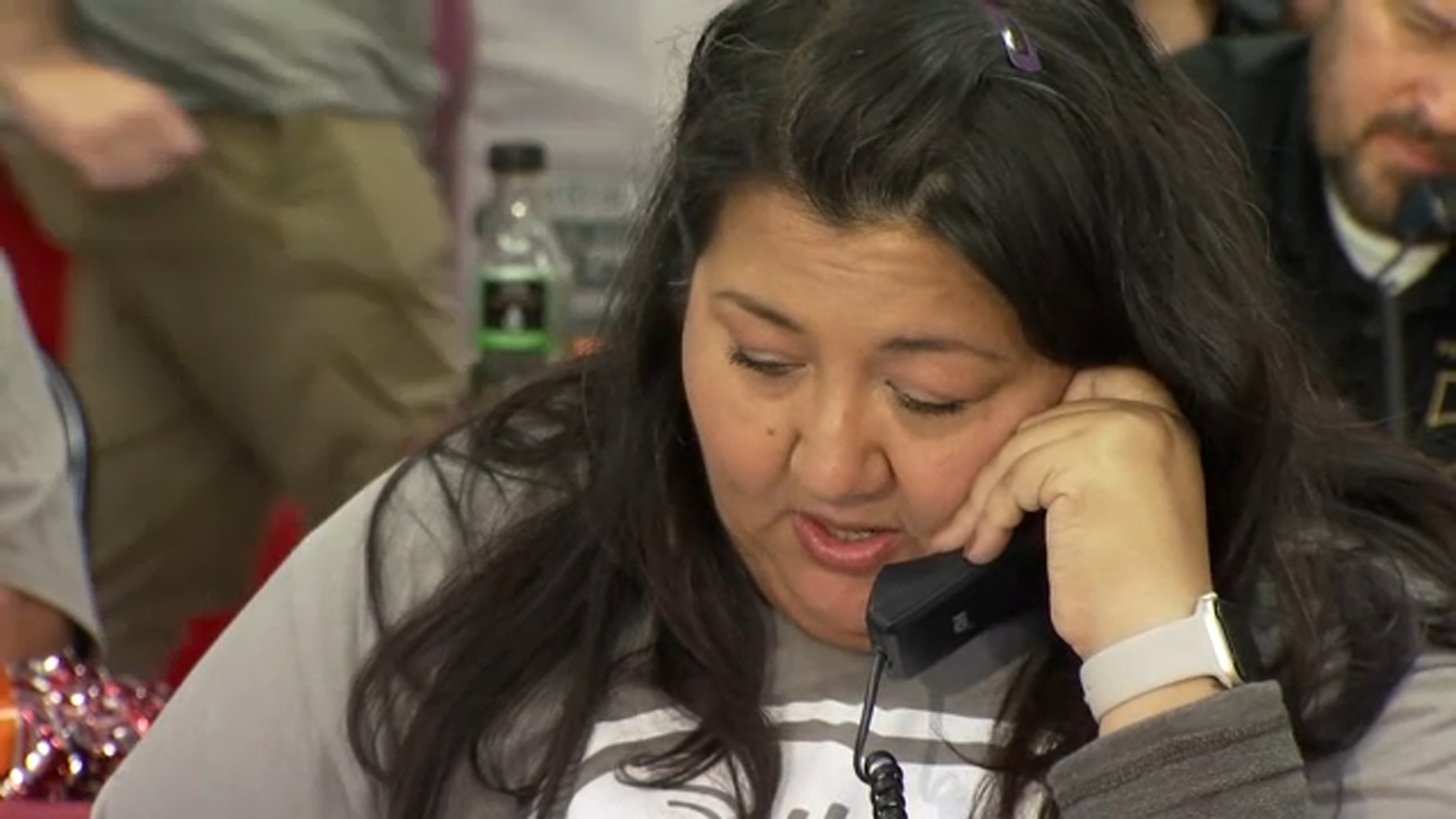Blood flow restriction training for ACL

FRESNO, Calif. (KFSN) -- As with other knee injuries, how you rehab from a torn ACL is critical to the overall success of the surgery to fix it. Hundreds of thousands of ACL repair surgeries are done every year in the United States and women are more likely than men to suffer this painful accident. We explain a very different approach to fixing this serious injury.
For 17 year old high school senior, Lia Roberson, basketball is her life.
"I started playing basketball when I was probably in the third grade," Lia shared.
Three different colleges recruited Lia with full basketball scholarships. But last July, in an instant, it looked like her playing days and her scholarships were gone.
Lia explained, "I felt a pop in my knee. I just felt like my leg was gone completely. A lot of tears between me and my parents."
But after ACL repair surgery, Lia couldn't wait to get back on the court. She went to a physical therapist who thinks restricting blood flow to the repaired knee may work better than traditional rehab. He uses bands above her knee during workouts twice a week for 30 minutes.
"The idea is by restricting some of the blood flow, your body reacts to it and so consequently you release hormones and growth factors. It shortens their rehab. Hopefully takes them to a higher level of function," Kevin Wilk, DPT, PT, FAPTA, Founder of Champion Sports Medicine, told Ivanhoe.
Wilk says Lia can get as much out of her workout without putting stress on her injured knee.
She's still cheering her teammates from the sidelines, but Lia hopes the blood restricting rehab approach will help get her back on the court in a few weeks.
Wilk explains, "One of the goals was to try to get her going as quickly as possible and to get her to a level of function to prepare her for a college career."
To Lia that sounds like a slam dunk.
"Knowing that this detrimental injury, I'm able to come back and actually play again in college is like my dream is still there," Lia cheerfully shared.
Dr. Wilk says Kaatsu , a blood flow restricting training technique developed in Japan about 70 years ago, is where this current blood flow restriction approach originated. Olympic athletes are even using the technique to stay in the game. Olympic lifter, Lindsey Stroker, uses blood flow restricting bands during squats to improve lower body strength.
------
BACKGROUND: An anterior cruciate ligament (ACL) injury is a tear in one of the knee ligaments that joins the upper leg bone with the lower leg bone. The ACL keeps the knee stable. Injuries range from mild, such as a small tear, to severe, when the ligament tears completely or when the ligament and part of the bone separate from the rest of the bone. Your ACL can be injured if your ACL is bent backward, twisted, or bent side to side. The injury can happen when your foot is firmly planted on the ground and a sudden force hits your knee while your leg is straight or slightly bent. This can happen when you are changing direction rapidly, slowing down when running, or landing from a jump. This type of injury is common in soccer, skiing, football, and other sports with lots of stop-and-go movements, jumping, or weaving. Symptoms include hearing a pop in the knee at the time of injury, pain, swelling, and limited knee movement.
(Source: https://www.webmd.com/a-to-z-guides/tc/anterior-cruciate-ligament-acl-injuries-topic-overview#1 and https://emedicine.medscape.com/article/89442-overview#a7)
TREATMENT: Medical treatments for an ACL injury begin with several weeks of rehabilitative therapy. A physical therapist will show you how to do exercises that you will perform with supervision or at home. You may also wear a brace and use crutches to avoid putting weight on your knee. The goal of rehabilitation is to reduce pain and swelling, restore your knee's full range of motion, and strengthen muscles. This course of physical therapy may successfully treat an ACL injury in individuals with minor ACL injuries. Your doctor may recommend surgery if your injury is more severe. During ACL reconstruction surgery, the surgeon removes the damaged ligament and replaces it with a segment of tendon, tissue similar to a ligament that connects muscle to bone. This replacement tissue is called a graft. The graft will serve as scaffolding on which new ligament tissue can grow. After surgery you'll resume another course of rehabilitative therapy.
(Source: https://www.mayoclinic.org/diseases-conditions/acl-injury/diagnosis-treatment/drc-20350744)
NEW TREATMENT: Blood flow restriction (BFR) training is the brief and partial restriction of venous outflow of an extremity during low load resistance exercises. BFR therapy at low loads can affect improvement in muscle strength in patients who are unable to perform high-resistance exercise. BFR Therapy can be introduced as early as a few days post-op and can also help stop anabolic resistance by initiating protein synthesis, which leads to growth and increase of the size of muscle cells. The equipment that is used during BFR training is a tourniquet. The tourniquet not only restricts the venous return flow, it also holds the lactate in the limb which initiates a systemic response that causes the pituitary gland to release growth hormone. Growth hormone is responsible for collagen synthesis which is how muscle, tendon, ligament, cartilage and bone heal. Director of Champion Sports Medicine, Kevin Wilk says, "The idea is by restricting some of the blood flow, your body reacts to it and consequently you release hormones and growth factors. It shortens their rehab."
(Source: https://www.ncbi.nlm.nih.gov/pubmed/25770798 and https://www.howardluksmd.com/orthopedic-social-media/blood-flow-restriction-therapy-useful-recovery-acl-surgery/)









